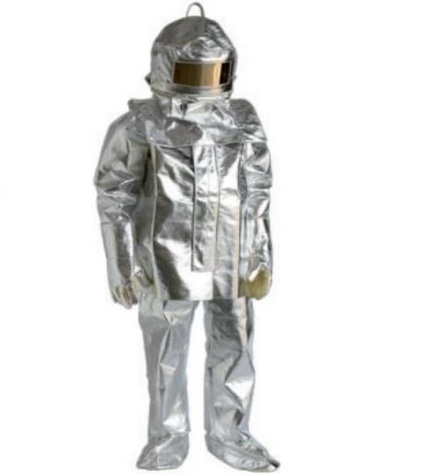General Requirements for Heat and Flame Protective Clothing
Recently, the Minister of Labor, War Invalids and Social Affairs has issued Circular 13/2019/TT-BLDTBXH on the National Technical Regulations for Heat and Flame Resistant Protective Clothing.
Protective clothing against heat and fire must meet the general requirements specified in the National technical regulation on Protective clothing against heat and fire, code: QCVN 37:2019/BLDTBXH issued together with Circular 13/2019/TT-BLDTBXH, specifically as follows:

Illustrative image (source: internet)
First, Thermal resistance at a temperature of (180 ± 5)°C: At a temperature of (180 ± 5)°C, all fabrics and hardware used in the clothing and/or clothing assemblies must not ignite, melt, or shrink more than 5%. Testing according to TCVN 7206:2002 Garments and protective equipment against heat - method for testing convective heat durability using a hot air circulating oven.
Second, Limited flame spread (code A1 and/or A2): Procedure A (code A1) or Procedure B (code A2) or both depending on the existing risks during use. The material and seam tests must be conducted both before and after the preliminary treatment as specified in 5 of TCVN 6875:2010.
Procedure A testing
- When tested according to TCVN 7205:2002 Garments for protection- heat and flame-resistant clothing- Limited flame spread testing method Procedure A, the test sample including seams is taken from single-layer clothing- In the case of multi-layer clothing, the test sample of the assembly containing seams must be tested for both the assembly and the seams by exposing the flame to the outer surface material of the clothing and the innermost lining of the clothing, with no sample showing holes except for the inner lining used for protection alone, not for heat protection.- Hardware such as Velcro fasteners, zippers (zipper sliders and teeth), etc., whether they are exposed or covered when all the closure systems of the garment are closed, must be tested separately by exposing the flame to the outer surface of the assembly containing the hardware as designed in the garment. The hardware must retain their functionality after testing.- Labels, badges, and reflective materials affixed to the outermost surface of the clothing should be tested together with the outer layer to sample. These parts must be tested by exposing the flame to the outer surface. These parts must exhibit the same flame-resistant performance as the outer layer of the clothing.
Procedure B testing
- When tested according to TCVN 7205:2002 Procedure B, the test sample for the edge of the paper is taken from single-layer clothing.- Test samples must be prepared from fabric with folded edges in the same way as used on the construction of the garment.- In the case of multi-layer clothing, test samples with folded edges of the assembly containing seams must be tested by exposing the flame to the edge of the multi-layer assembly.
Third, Dimensional change due to cleaning
- Not applicable to individually used clothing that is not permitted to be washed or dry-cleaned, or leather.- The dimensional change of woven fabrics, non-woven fabrics, and sheet materials must not exceed 3% in length or width. Test according to TCVN 8041:2009 Textile materials - determination of dimensional change during washing and drying.- The dimensional change of knitted materials must not shrink more than 5%. The shrinkage must be measured when the test sample no longer has folds and is flat on a plane. Test according to TCVN 8041:2009.
More details can be found in Circular 13/2019/TT-BLDTBXH effective from April 1, 2020.
Thu Ba
- Number of deputy directors of departments in Vietnam in accordance with Decree 45/2025/ND-CP
- Cases ineligible for pardon in Vietnam in 2025
- Decree 50/2025 amending Decree 151/2017 on the management of public assets in Vietnam
- Circular 07/2025 amending Circular 02/2022 on the Law on Environmental Protection in Vietnam
- Adjustment to the organizational structure of the Ministry of Health of Vietnam: Certain agencies are no longer listed in the organizational structure
- Vietnam aims to welcome 22-23 million international tourists in Vietnam in 2025
-

- Notable new policies of Vietnam effective as of ...
- 16:26, 11/04/2025
-
.Medium.png)
- Notable documents of Vietnam in the previous week ...
- 16:21, 11/04/2025
-
.Medium.png)
- Notable documents of Vietnam in the previous week ...
- 16:11, 02/04/2025
-
.Medium.png)
- Notable new policies of Vietnam to be effective ...
- 16:04, 02/04/2025
-
.Medium.png)
- Notable new policies of Vietnam effective from ...
- 14:51, 21/03/2025
 Article table of contents
Article table of contents
